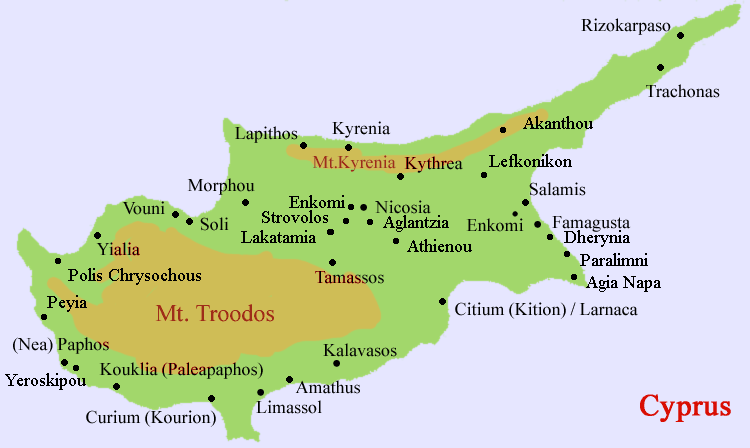|
|
Aetokremnos is a rock shelter near Limassol on the southern coast of Cyprus. It is situated on a steep cliff site ca. 40m above the Mediterranean. The name means "Cliff of the vultures" in Greek. Ca. 40m² have been excavated. Of the four layers found, No. 3 is sterile. The site contains both bones of the late Holocene dwarf fauna, pygmy elephants (Elephas cypriotes) and hippopotamus (Phanourios minutis) and artifacts (ca. 1.000 flints including thumbnail scrapers of mesolithic type). There are no bones with marks of butchery, but an unusually high frequency of burned bones (30%). The pygmy hippos make up ca. 74% of the bones, followed by fish remains (25%) and birds, mainly bustards. Dwarf elephants are comparatively rare (3 individuals). The presence of fallow deer (4 bones) and pig (13 bones) is puzzling, since these animals are thought to have been introduced only in the PPNB period. The excavators claim that hearth remains are found in the layer containing the bone beds of the extinct megafauna. This would make it the oldest Cypriote settlement and attest settlement already in the Epipalaeolithic. 31 radiocarbon dates with a high internal consistency put the date of the bones at ca. 10.500 BC cal. and make it a short-term occupation. There are other deposits with bones of pigmy elephants and hippopotami on the island, but these do not contain artifacts.
Sources A. Simmons, The first humans and last pygmy hippopotami of Cyprus. In: S. Swiny, The earliest prehistory of Cyprus. From Colonization to exploitation. Cyprus American archaeological research institute Monograph Series 5 (Boston, American School of oriental research 2001), 1-18. [1] A. Simmons (2000): "Faunal extinction in an island society: pygmy hippopotamus hunters of Cyprus". Geoarchaeology 15(4):379-381
Retrieved from "http://en.wikipedia.org/"
 |
||||||||||||||||||

